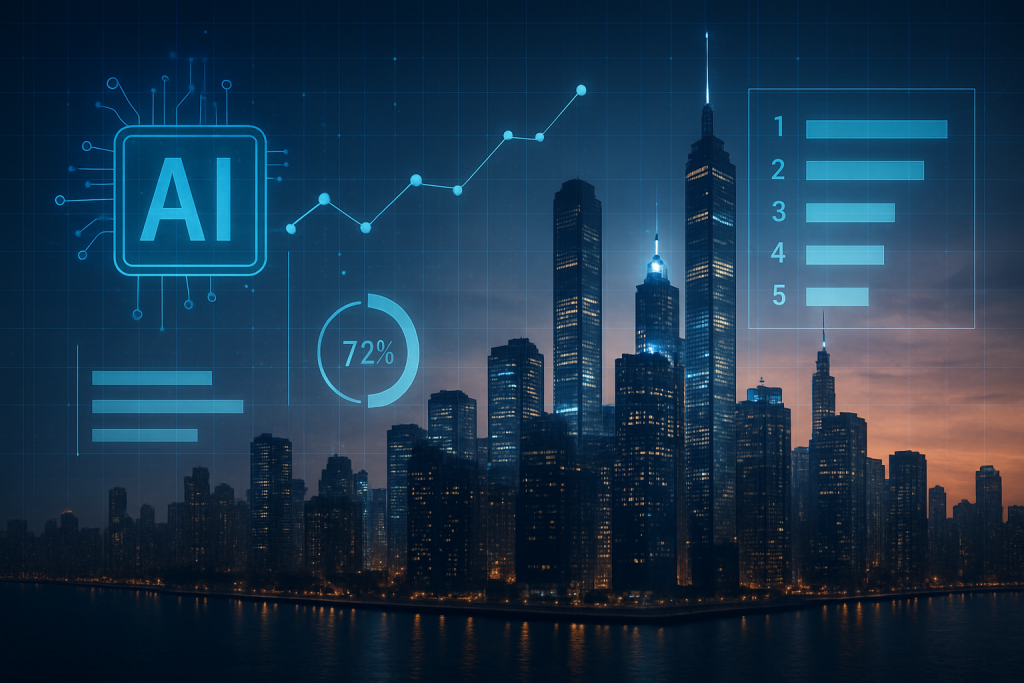June 15th, 2025. A date that might not ring any immediate bells, unless you’re deeply invested in the geopolitical chess game that is the AI race. That’s when the International Finance Forum (IFF), not exactly a household name but a serious player in global financial cooperation, dropped its inaugural Global AI Competitiveness Index Report. Think of it as the “Moneyball” for AI, except instead of undervalued baseball players, we’re talking about entire nations.
Why should you care? Well, because AI is no longer the stuff of science fiction. It’s not just HAL 9000 refusing to open the pod bay doors (though, let’s be honest, that’s still a relevant fear for some). It’s woven into the fabric of our lives, from the algorithms that curate our news feeds to the self-driving cars inching their way onto our streets. And the countries that dominate the AI landscape will likely dominate the 21st century. This report is a snapshot of who’s winning, who’s lagging, and what it all means.
The IFF’s motivation is simple: to create a standardized, objective way to measure AI prowess across different countries. Until now, assessments have been fragmented, often relying on anecdotal evidence or biased datasets. The IFF aims to cut through the noise and provide a clear, quantifiable picture of the global AI playing field.
So, how does the IFF actually *do* this? Forget crystal balls and tea leaves. They’ve crafted a framework based on five core dimensions, each designed to capture a different facet of a nation’s AI capabilities.
The Five Pillars of AI Power
First, we have Technical Development and Applications. This is where the rubber meets the road. It’s not enough to have brilliant AI researchers; you need companies that can actually *build* and *sell* AI products. Think of it as the difference between theoretical physics and engineering. One provides the foundation, the other builds the skyscrapers. This dimension looks at the number and success of AI companies operating within a country, examining their market share, revenue, and overall impact.
Next up is Research and Innovation. This is the engine room of AI advancement. It’s about the groundbreaking research happening in universities and labs, the number of published papers, the patents filed, and the overall vibrancy of the innovation ecosystem. A country could have all the money in the world, but without a strong research base, it’s just burning cash. Think of it like this: you can buy a fancy race car (technical development), but without a team of dedicated engineers constantly innovating and improving the engine (research and innovation), you’ll quickly be left in the dust.
Then there’s Human Capital. This is arguably the most crucial dimension. AI doesn’t build itself; it requires skilled engineers, researchers, and data scientists. This dimension assesses the availability and quality of AI talent, from the strength of the education system to the skills of the workforce. Are universities churning out AI experts? Are companies able to attract and retain top talent? A nation with a surplus of brilliant minds is a nation poised to lead the AI revolution.
Fourth, we have the Policy and Regulatory Environment. This is where things get tricky. Governments can either foster AI development or stifle it with overly restrictive regulations. This dimension analyzes the policies, regulations, and initiatives that support or hinder AI development. Are there tax incentives for AI companies? Are there clear guidelines for data privacy? A supportive policy environment can be a powerful catalyst for AI growth, while a hostile one can send innovation fleeing to more welcoming shores. The EU, for example, has been wrestling with this, trying to balance innovation with strong ethical guidelines. It’s a tightrope walk.
Finally, there’s Market Acceptance and Infrastructure. This looks at how willing a country is to adopt AI technologies, as well as the underlying infrastructure needed to support them. Do businesses embrace AI solutions? Is there sufficient computing power and data infrastructure? A population resistant to change or a lack of essential infrastructure can significantly hamper AI adoption. Imagine trying to launch a cutting-edge AI-powered transportation system in a country with unreliable internet and a population deeply attached to their horses and buggies. It simply wouldn’t work.
Why This Matters
The significance of this report goes beyond just bragging rights. It’s about power, influence, and economic prosperity. By providing a clear benchmark, the report allows countries to see where they stand relative to their competitors. Are they lagging in research? Do they need to invest more in education? Are their policies hindering innovation? The report provides the data needed to make informed decisions.
Moreover, the report can inform policy decisions. Governments can use the insights to craft strategies that foster AI growth and address existing gaps. If a country is weak in human capital, it might invest in STEM education or offer incentives to attract foreign talent. If its regulatory environment is stifling innovation, it might consider streamlining regulations or offering regulatory sandboxes for AI companies to experiment.
The report also encourages international collaboration. By highlighting best practices and successful models, it encourages nations to learn from each other’s experiences. No single country has all the answers, and collaboration is essential for driving AI development forward. Think of it as the Avengers assembling to fight a common threat, except instead of Ultron, it’s global competition.
And, of course, the report can attract investments. Countries that rank high in the index are more likely to attract foreign investment in their AI sectors. Investors want to put their money where it’s most likely to generate a return, and a strong AI ecosystem is a clear signal of potential. A high ranking becomes a self-fulfilling prophecy: the better you do, the more investment you attract, the better you become.
The Bigger Picture
The release of the IFF’s Global AI Competitiveness Index Report is more than just a statistical exercise. It’s a sign that the AI race is heating up, and the stakes are higher than ever. The countries that master AI will shape the future, influencing everything from healthcare to transportation to entertainment. This report is a valuable tool for understanding the current landscape and navigating the challenges and opportunities that lie ahead. It’s a reminder that the future isn’t just coming; it’s being built, one algorithm, one research paper, one policy decision at a time.
Discover more from Just Buzz
Subscribe to get the latest posts sent to your email.


